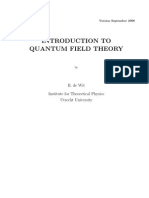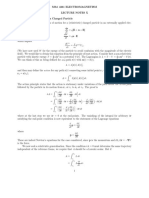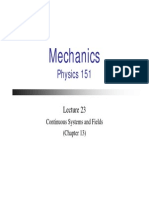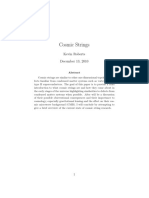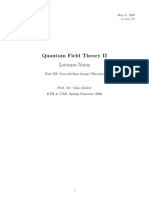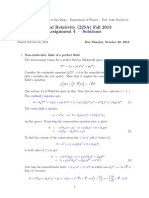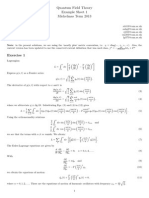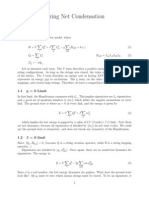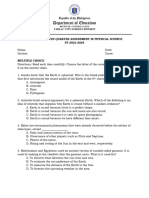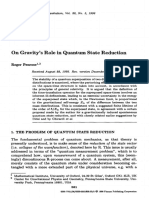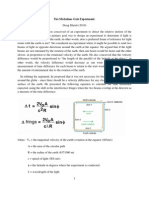0% found this document useful (0 votes)
120 views8 pagesField Theory 1 String Dynamics: I I I A
1) The document discusses the continuum limit of a stretched string with masses attached at discrete points. In the limit as the number of masses increases and their spacing decreases, the discrete dynamical variables become continuous fields defined at each point in space.
2) Taking the continuum limit of the Lagrangian and equations of motion results in a wave equation for transverse waves on the string, with the wave speed determined by the string tension and linear mass density.
3) More generally, the dynamics of continuous fields in three dimensions can be described by a Lagrangian density and the corresponding action. The actual field configuration is determined by extremizing the action subject to any boundary conditions.
Uploaded by
LeonardNemoyCopyright
© © All Rights Reserved
We take content rights seriously. If you suspect this is your content, claim it here.
Available Formats
Download as PDF, TXT or read online on Scribd
0% found this document useful (0 votes)
120 views8 pagesField Theory 1 String Dynamics: I I I A
1) The document discusses the continuum limit of a stretched string with masses attached at discrete points. In the limit as the number of masses increases and their spacing decreases, the discrete dynamical variables become continuous fields defined at each point in space.
2) Taking the continuum limit of the Lagrangian and equations of motion results in a wave equation for transverse waves on the string, with the wave speed determined by the string tension and linear mass density.
3) More generally, the dynamics of continuous fields in three dimensions can be described by a Lagrangian density and the corresponding action. The actual field configuration is determined by extremizing the action subject to any boundary conditions.
Uploaded by
LeonardNemoyCopyright
© © All Rights Reserved
We take content rights seriously. If you suspect this is your content, claim it here.
Available Formats
Download as PDF, TXT or read online on Scribd
/ 8





